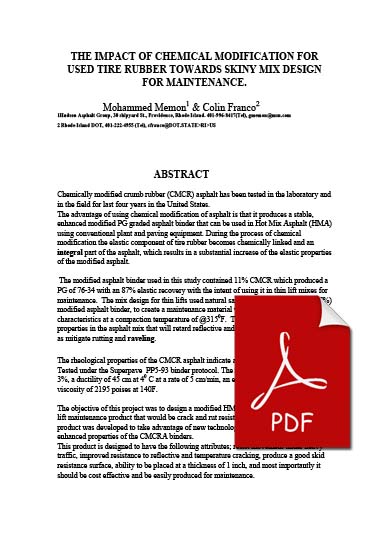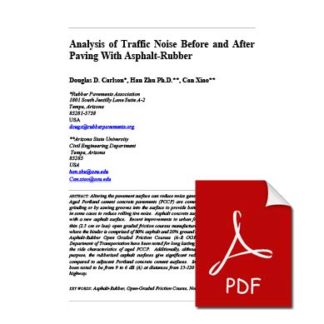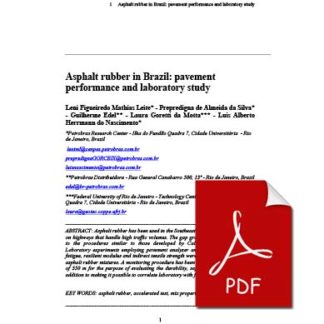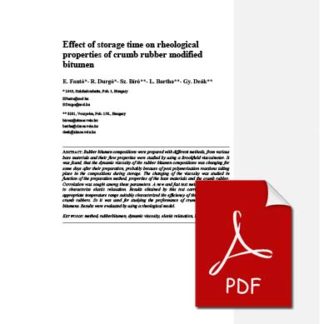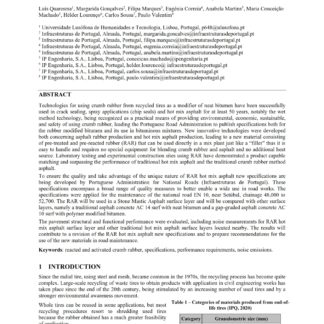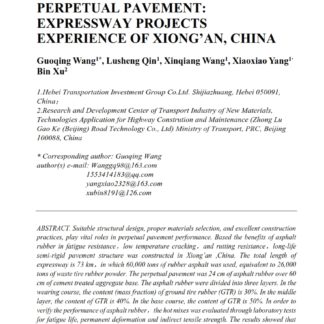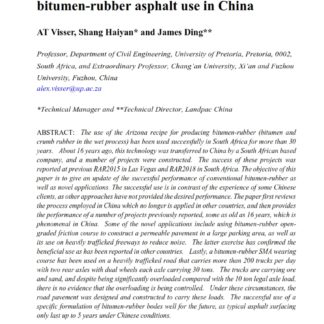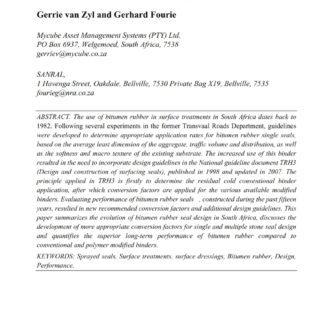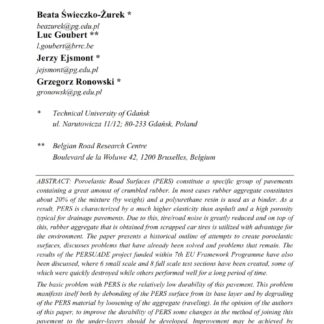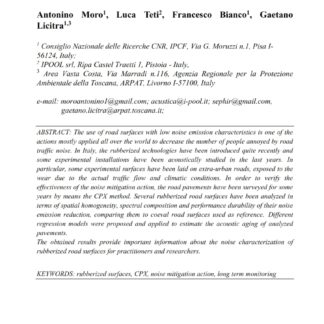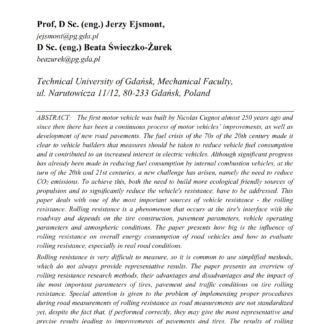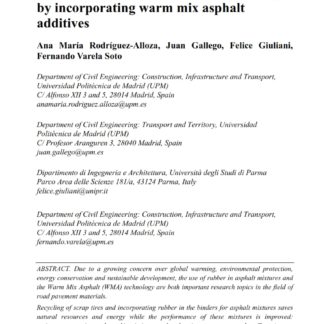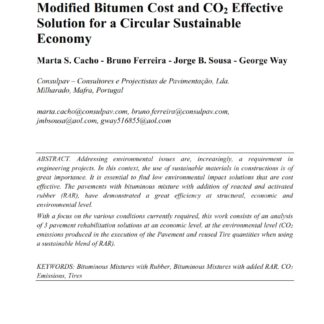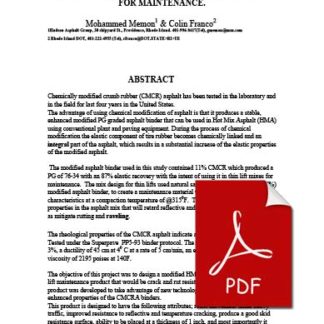Description
Chemically modified crumb rubber (CMCR) asphalt has been tested in the laboratory and in the field for last four years in the United States.
The advantage of using chemical modification of asphalt is that it produces a stable, enhanced modified PG graded asphalt binder that can be used in Hot Mix Asphalt (HMA) using conventional plant and paving equipment. During the process of chemical modification the elastic component of tire rubber becomes chemically linked and an integral part of the asphalt, which results in a substantial increase of the elastic properties of the modified asphalt.
The modified asphalt binder used in this study contained 11% CMCR which produced a PG of 76-34 with an 87% elastic recovery with the intent of using it in thin lift mixes for maintenance. The mix design for thin lifts used natural sand; ¼” aggregate; and (6%-7%) modified asphalt binder, to create a maintenance material with suitable placement characteristics at a compaction temperature of @3150F. This modified binder creates properties in the asphalt mix that will retard reflective and temperature cracking as well as mitigate rutting and raveling.
The rheological properties of the CMCR asphalt indicate a continuous PG of 78- 37. Tested under the Superpave PP5-93 binder protocol. The material had a separation of 3%, a ductility of 45 cm at 40 C at a rate of 5 cm/min, an elastic recovery of 87%, and a viscosity of 2195 poises at 140F.
The objective of this project was to design a modified HMA that could be used as a thin lift maintenance product that would be crack and rut resistance. Keeping this in mind the product was developed to take advantage of new technology in mix design as well as the enhanced properties of the CMCRA binders.
This product is designed to have the following attributes; resist movement under heavy traffic, improved resistance to reflective and temperature cracking, produce a good skid resistance surface, ability to be placed at a thickness of 1 inch, and most importantly it should be cost effective and be easily produced for maintenance.

